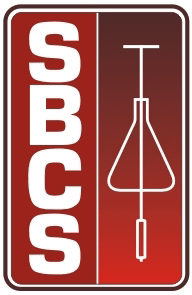In Mango cultivation under Brazil conditions paclobutrazol (PBZ), a growth regulator, is very used. However it is not yet well known about the leaching potential of PBZ in these soil conditions. The objectives of this study were to evaluate sorption and mobility of paclobutrazol (PBZ), a growth regulator of the chemical group triazol, in a sandy loam soil found in the sub-mid region of the San Francisco River valley, where mango cultivation is intense. The sorption study was based on isotherms, at five different concentrations (1.24; 2.48; 5.08; 10.22; and 20.52 mg L-1), using the radioisotope (14C-PBZ) as tracer. Desorption was evaluated after discarding the supernatant and further addition of 0.01 mol L-1 CaCl2 solution, and repeating the entire process four times. The PBZ mobility was evaluated in packed soil columns, under an evenly distributed rainfall simulation of 300 mm for 72 h. The PBZ detected low sorption potential in the studied soil (Kf = 1.06 mg1-N L N kg-1; Kd (mean) = 0.83 L kg-1 and K OC (mean) = 165.7 L kg-1), corresponding to a mean of 24.7 % of the applied amount. After desorption, only 5.3 % of the applied PBZ was still sorbed to the soil particles, thus 19.4 % of the applied amount was desorbed to the soil solution. Therefore, 75.3 % of the applied PBZ remained in solution after sorption and 19.4 % was desorbed, totalizing an amount of 94.7 % of the compound available in the soil solution. However, only 0.83 % of the applied PBZ leached through the soil columns, but 43.7 % of the applied amount was transported below the upper 10 cm of the soil profile. PBZ mobility was therefore lower than expected, even when taking the high sand (77.5 %) and low organic C (5 g dm-3) soil contents into consideration and that rainfall simulation was rather intense (300 mm). Nevertheless, the possibility of leaching could not be ruled out in view of the PBZ mobility in the soil profile.
sorption; leaching; soil columns; growth regulator; triazol



